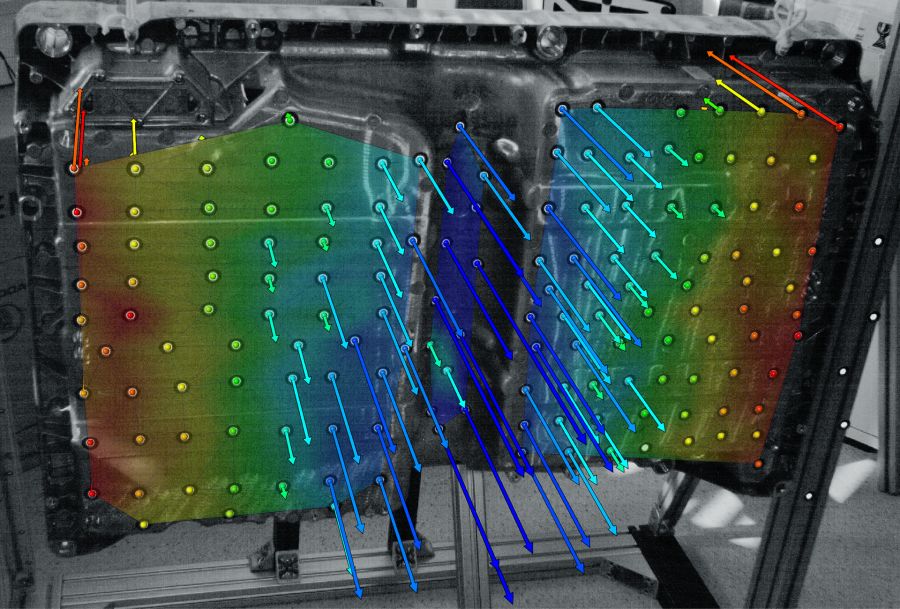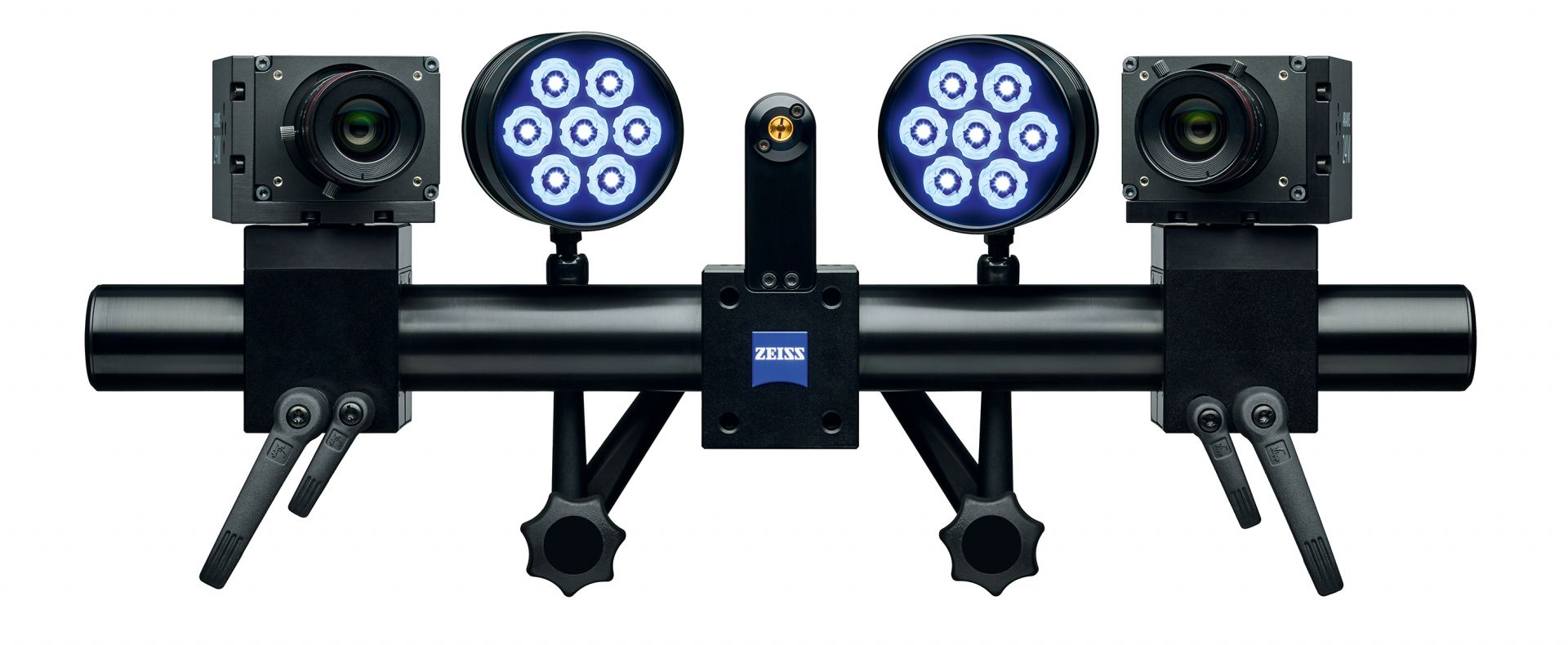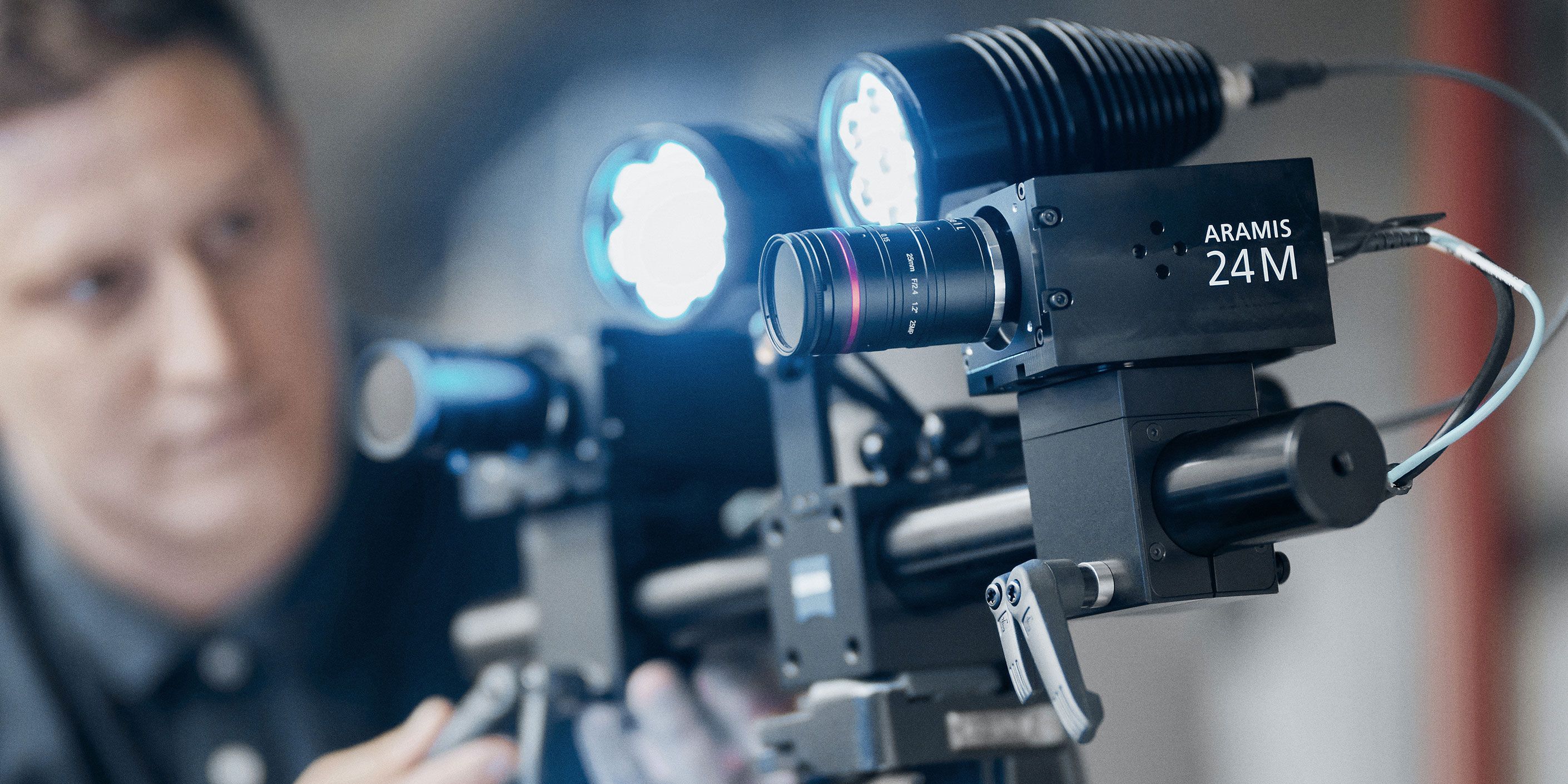Dynamic 3D testing with ARAMIS
More Than Just Safety
With the EU’s decision that new vehicles on sale must be equipped with an electric drive system as of 2035, Europe is taking an important step towards more sustainable mobility. The ensuing pressure to innovate is a major quality assurance challenge for automotive manufacturers and their suppliers. Optical 3D metrology is already solving a wide range of measuring tasks during safety-relevant material and component tests.

An interview with
Dr. Oliver Witzel
Product manager
As new technologies are emerging, safety aspects are ever more important. How does ARAMIS help experts in research and development to evaluate and improve the safety of electric vehicles?
Basically, the ARAMIS product family consists of optical 3D sensors that capture deformations and any movement of components and material with high precision. Our powerful software for digital image correlation then provides precise analyses of strain displacements, rotations and much more.ARAMIS is helpful for multiple component tests and measuring tasks – regardless of the vehicle’s drive system.
Can you cite an example from the field of electric vehicles?
Regarding electromobility, the battery module is crucial when dealing with safety issues. Currently, we are using the ARAMIS SRX high-speed system to investigate the rigidity of the battery enclosure. This parameter is the critical factor to assess its capability to protect the high-voltage battery from damage. During crash tests, the system captures the component’s deformation behavior at measuring speeds of up to 1,000 measured values per second. It yields precise analyses of each displaced battery module. Naturally, crash tests are just one out of many potential applications of ARAMIS.
Are there any other relevant battery module tests?
Vibrations impact the high-voltage battery and its enclosure during production, transportation and even while operating an e-vehicle. They can interfere with the function of the entire battery module. Vibrations therefore have a negative effect on the position of the battery cells in the enclosure and thus affect the motor’s power output and the efficiency of the entire system. This is where the sensors of the ARAMIS product family come in to ascertain the enclosure’s natural frequencies and to determine operating deflection shapes. Armed with these measuring results, you can optimize one of the most important and largest components in electric vehicles.

Displacements on the z-axis at a battery tray. Measured with ARAMIS during an impact hammer test to determine operating deflection shapes.

Operating deflection shapes on the z-axis.
Will materials and component testing requirements be more stringent as system complexity increases?
Absolutely. The choice of incorporated materials and, above all, the smooth interaction of components are decisive factors when competing for product innovations. Testing ever-smaller components is a major challenge for engineering – which we mastered with the new ARAMIS Adjustable 24M sensor. Featuring two high-resolution 24 megapixel cameras and a frame rate of 100 fps, the system is especially suited for full-field analyses of minuscule surface changes. This feature is critical, for instance, for electronic components tests for determining thermal expansion coefficients and the analysis of warpages caused by thermal loads.

